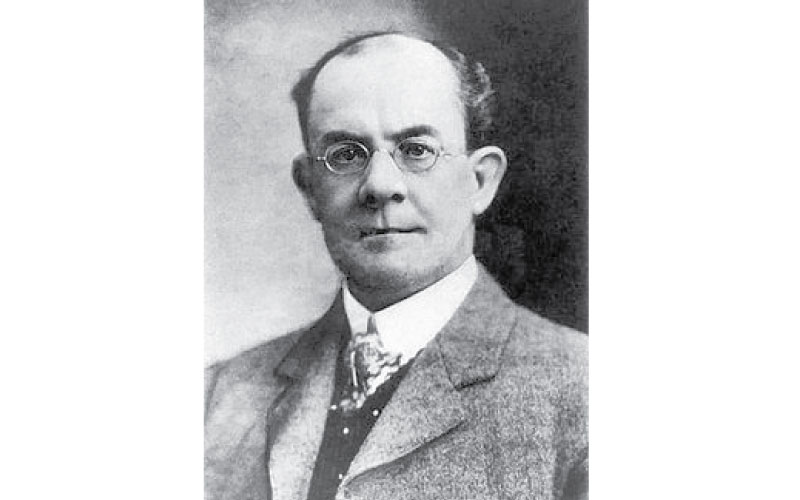
Akroyd Stuart (1864-1927)
THERE is no evidence that Herbert Akroyd Stuart ever even came to Grantham, but his influence was felt for more than half-a-century.
The son of an engineer who had a small works at Bletchley (Bucks), Akroyd was born in Halifax,Yorkshire. He received a good general education at Newbury Grammar School and a sound technical education at the City and Guilds of London College, Finsbury, a well-known centre of advanced engineering study in his day.
Later he was employed in his father’s works, to the management of which he succeeded on the death of his father.
His discovery was an accident, which nearly led to a serious injury. Examining some machinery for tinning steel plates he dropped some oil on to molten metal, and the resultant vapour immediately burst into flame on contact with a light he carried.
The possibility of using oil vapour in an engine occurred to him and he started to experiment. This was in 1886.
The compressed air in the heavy oil engine is at a sufficiently high temperature towards the end of the suction stroke to ignite the charge when this is introduced into it in a fine spray. The discovery of this fact is entirely due to Herbert Akroyd Stuart.
The principle was fully developed by 1890, in which year Stuart took out a patent for the engine. Stuart granted a licence to Richard Hornsby and Sons, of Grantham, for the manufacture of the engine which, with some modifications in design, was then known as the Hornsby-Akroyd engine.
The oil engine became Hornsby’s core product until it closed in the 1960s. It even produced the first ‘diesel’ tractors but failed to market them efficiently. The company also built the world’s first oil-engined railway locomotive LACHESIS for the Royal Arsenal, Woolwich, England, in 1896. They also built the first compression-ignition powered automobile.
And the light in the Statue of Liberty’s torch, was from a generator powered by a Hornsby-Akroyd engine.
The engine which was patented by Diesel did not assume a really practicable form until 1897. In his engine the oil was injected not by a pump but by a jet of compressed air at a high pressure.
Why the true inventor has not been more widely recognised is puzzling.
He emigrated to Australia in the year 1900, and set up a company Sanders & Stuart with his brother Charles, latterly moving back to Yorkshire, England.
He died of throat cancer and was buried in All Souls church in Boothtown, Halifax.
The University of Nottingham has hosted the Akroyd-Stuart Memorial Lecture on occasional years in his memory since 1928. One was presented by Sir Frank Whittle in 1946.




Leave a Reply
You must be logged in to post a comment.